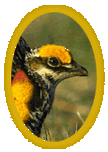Welcome to the Lek Trek Website!
Why we need the Lek Trek
How the Lek Trek Works
Register to participate here! Prizes! Sign up for Lek Trek Miles here!
Lek Trek Special Events
Photo gallery of Missouri prairie species
The Missouri Grasslands Coalition
Contact the Lek Trek Team
Where to see prairies
|
|||||||||||||||||||||||||||||||
| More than a third of Missouri's 15 million acres was originally prairie, much of which could be restored to natural diversity. | |
| Of all habitats in North America, grasslands -- our prairies -- have been the hardest hit. | |
| More than 90 percent of the world's grasslands have been destroyed. | |
| Forty percent of the United States was at one time prairie, of which less than one-half of one percent remains today. | |
| The annual U.S. wholesale value of farm crops is $9 billion. In the U.S., 2,839 species of rare and endangered plants are related to cultivated species. Close relatives often are used in breeding experiments to make crop plants more resistant to insect pests or diseases. Protecting these imperiled plants could provide additional food sources for Missourians and for people around the world. | |
| Grazing animals are a natural part of grassland systems. Missouri is the second biggest producer of cattle in the United States. | |
| Nearly 40 percent of all prescribed medicines are derived from plants and fungi or are designed from naturally occurring chemical compounds. These medicines include aspirin, as well as drugs that treat childhood leukemia, breast cancer and heart disease. | |
| Only a small percentage of plants have ever been analyzed for medicinal benefits. Some could yield cures for devastating diseases like cancer and AIDS. Some of these plants could be in Missouri. |
Grasslands in Missouri
| Hundreds of insects, birds, mammals, reptiles and soil biota depend on grasslands for their survival. Most are declining because of the loss of our native grassland - prairie, most of which has been plowed and replaced with non-native fescue grass or overgrown with trees and brush. | |
| More than 90 percent of Missouri's original prairie is now fescue, an aggressive Eurasian grass that offers poor food or shelter for most grassland animals. The common fescue varieties harbor a toxic fungus that lowers livestock performance, particularly through hot summer months. | |
| Native prairie grasses, on the other hand, could provide excellent forage for livestock through the summer. Native grasses require more management skills than fescue, but need little moisture or fertilizer to produce summer growth. | |
| Thousands of acres are restorable to native prairie in Missouri. Thousands more could be converted to grasses that are better for livestock and wildlife. The initial costs of ridding pastures of exotic plants like fescue are high, but native grasses and other, more diverse pasture systems could then be used to the economic benefit of Missouri farmers, while providing greater survival benefits to grassland wildlife. | |
| Prairie is what shaped the rich soil that made the United States an agricultural powerhouse. Prairie roots grow deep, some reaching in excess of 12 feet into the ground; under one square yard of prairie grass lie 25 miles of roots, one third of which die and are replaced annually. These roots and the biota they support protect water quality by increasing infiltration and reducing the runoff that carries pollutants into our water supplies. | |
| Thousands of acres of idle land in fence rows, field borders, highway rights of way and old fields could be restored with native grasses. These grasses could in turn rebuild the soil, improve water quality, provide wildlife habitat and conserve biodiversity, all without adversely affecting farm operations. | |
| The Grasslands Coalition and the Lek Trek seek to help Missourians understand the vital importance of grasslands and their restoration, to benefit farmers, wildlife and the public alike. |
